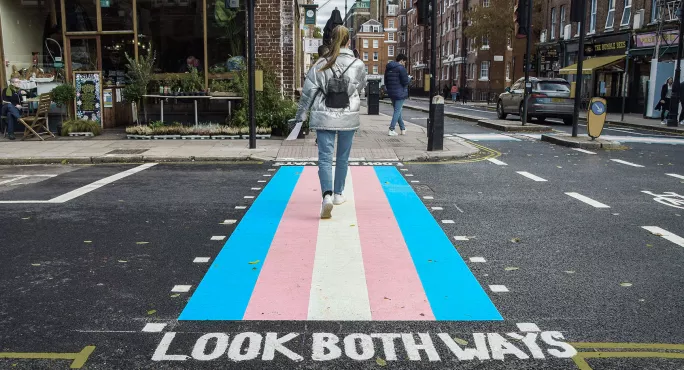Trans students: the legal risks for schools

As the number of school students identifying as trans continues to rise, many school leaders will probably have paid keen attention to an interview with Suella Braverman in The Times at the end of last month.
In it, the attorney-general said schools were under no legal obligation to acquiesce to children’s requests to be referred to as members of the opposite sex, and that girls’ toilets and changing rooms had special legal protections as safe spaces.
Earlier in May, the education secretary, Nadhim Zahawi, also raised trans issues in an interview, also with the Times. Children needed to be handled with “sensitivity and love”, he said - but “sex is important” and accommodating trans-identified students needed to be done without putting others’ safety and wellbeing at risk.
Mr Zahawi promised that his department, together with the attorney-general and the Equality and Human Rights Commission (EHRC), would soon publish guidance on how to navigate sex and gender identity in schools.
That is much needed.
In April, a YouGov poll commissioned by Sex Matters, a human rights group of which I am a director, showed that many schools are now giving trans-identified children access to spaces reserved for the opposite sex.
Schools in a ‘legally risky’ situation with trans students
Some are also facilitating social transition - a change of self-presentation such as name and pronouns with the intention of being treated as the opposite sex - while keeping that information from parents.
Even before the new guidance is published, it is clear that such actions are legally risky.
The Equality Act 2010, a mainstay of human rights legislation, says that “sex” and “gender reassignment” (identifying as transgender) are separate protected characteristics. A declaration of trans identity does not change a child’s sex.
The only way to change legally recognised sex is to use the provisions of the Gender Recognition Act 2004, which covers only people aged 18 and upwards.
For schools, this means that wherever sex matters, children should be treated equally with their same-sex peers. This is not discriminatory; in fact, treating a trans-identified child differently from other children of their sex could be discriminatory on grounds of gender reassignment.
Excluding trans-identified boys (“trans girls”) from boys’ spaces, or a boys’ school, would be a textbook example of discrimination on the grounds of gender reassignment. The same would be true of excluding trans-identified girls (“trans boys”) from girls’ spaces and activities.
Providing trans-identifying girls with breast binders, or failing to tell parents of this safeguarding concern, might also constitute less favourable treatment.
Permitting trans-identified boys to compete in girls’ sports would also be legally problematic, at least once children have reached puberty. It is arguably indirect sex discrimination against girls, since boys are on average much bigger, stronger and faster. Their inclusion puts girls at a disadvantage in a way that allowing girls into boys’ sports would not disadvantage boys.
Enabling trans-identified children to use toilets and changing rooms for the opposite sex is possibly also indirect discrimination against other children, this time on grounds of “religion or belief”, another of the nine protected characteristics.
That is because it would disadvantage children from religions that mandate sex separation in intimate spaces, such as Orthodox Judaism and some strands of Islam, or indeed those with “gender-critical” beliefs (the belief that sex is binary, immutable and important). It also breaches school regulations that require single-sex toilets and changing rooms for all pupils aged 8 and over.
And finally, keeping secrets about sex - whether from parents, students or some staff - runs counter to safeguarding principles and makes proper risk assessment impossible.
As if all this wasn’t enough for schools to consider, there is also the issue of social contagion.
In her interim report published in February, Dr Hilary Cass, the eminent paediatrician currently reviewing child gender medicine in the NHS for the Department of Health and Social Care, cited worries about the role of social media in the recent steep rise in childhood trans identification.
She also cautioned that social transition is “not a neutral act” but a significant psychological intervention that may make gender distress less likely to resolve on its own.
Teachers are not mental health professionals, and schools are not clinics. They should not facilitate such transitions without appropriate psychological support in place for the child, and should certainly not do so without parents’ and caregivers’ knowledge.
Judging by the attorney-general’s and education secretary’s interventions, school leaders and teachers will soon have official, safeguarding-informed and legally sound guidance to rely on.
In the meantime, they will not go far wrong if they seek to uphold the rights, wellbeing and safety of all their students.
This means considering all the protected characteristics, not just gender reassignment. And it means upholding school regulations regarding single-sex spaces - and, above all, child-safeguarding principles.
Rebecca Bull is an employment and discrimination lawyer in private practice
Register with Tes and you can read two free articles every month plus you'll have access to our range of award-winning newsletters.
topics in this article



